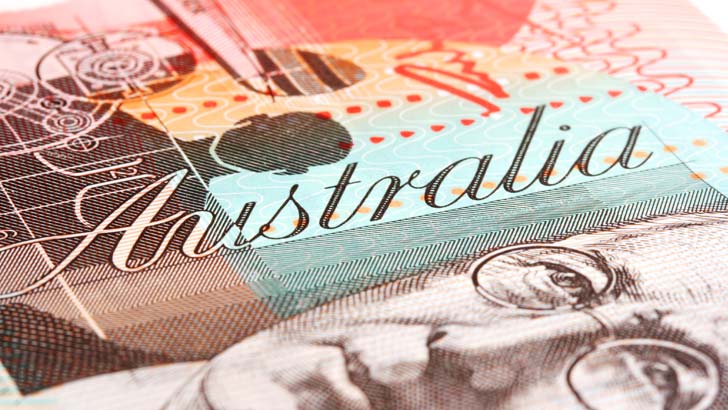Seven ways to take the pain out of tax time next year
By Adrian Raftery
With the new financial year underway, the annual obligation to submit your income tax return by October 31 is right around the corner.
Some of you are probably in a mad panic trying to scrape together your receipts in a futile attempt to boost your refund (or, worse, reduce your tax payable) with some last-minute claims.
For others, July 1 brings around a new sense of hope with a whole year to get your tax planning right in 2019-20.
It always surprises me when people think that tax planning occurs only in June.
If you want to save as much as legitimately possible on your largest expense (tax), it is best to start as early as possible.
Tax planning should be a 365-day-a-year exercise, not one merely carried out in the few days before June 30.
Here are seven strategies that are more applicable for action at the start of the year (July 1) than at the end of the year (June 30).
1. Put $20 a week into superannuation
For years I was surprised by how few people took advantage of getting free money from the federal government in the form of the super co-contribution.
This is available to those who earn under $38,564 and contribute $1000 post-tax into super, with the government matching it with an extra $500.
But then I realised that someone who is a low-income earner would find it really tough to miraculously come up with $1000 on the last day of June and whack it into super.

In reality, they would probably have other, more pressing priorities on where to best utilise the lump sum.
That is why the beginning of the financial year is the best time to start this co-contribution strategy.
It is a lot more manageable if you start taking $20 from your weekly pay and putting it into super, rather than trying to find $1000 at the end of the year.
2. Build your nest egg quicker by salary sacrificing
In a similar vein, for those who earn more than $37,000 salary sacrificing into super is one of the best ways to minimise your income tax bill (and it's legitimate).
Although the concessional cap was lowered on July 1, 2017 you can still contribute up to $25,000 a year, which is taxed at only 15% instead of your marginal rate (potentially 47%).
As with the super co-contribution, few have maximised this strategy as it is often too late in June to top up compulsory super contributions to the threshold.

If you can put an extra $1 million over a lifetime into retirement savings, then you are potentially saving $320,000 in tax (plus any returns on top of that).
Could that $320,000 mean you retire a few years earlier or perhaps enjoy a more comfortable retirement? I'm sure it would, so start putting extra super away through your pay packet when July 1 arrives.
3. Do a logbook
Work-related car travel is generally the biggest tax deduction (in the thousands) for individuals, yet so many people fail to maximise it.
If you use your car for work-related purposes, the logbook method is best, but again this is something that you can't just do on June 30 - it takes 12 weeks of diligence in keeping accurate records.

I know from personal experience that logbooks are annoying creatures to complete but it's just a minute in the morning, a minute in the evening for potentially an extra $5000 in tax savings.
It's important to keep your receipts for all costs associated with the running of your car (such as petrol, insurance, registration, servicing and lease payments), not just the logbook period.
If you change your job role, get a new car or your logbook is more than five years old, then you need to start a new one.
4. Keep your receipts with myDeductions
Poor record-keeping is often associated with low refunds. Tax agents cannot wave a magic wand if you don't do the basics and keep your receipts throughout the year for your work- or business-related expenses.
The ATO's rule in most circumstances is that no receipt results in no deduction, so if you take work-related car travel as an example you could be costing yourself money by not keeping those petrol dockets.

Get into a habit early in the year.
The tax office has a great app called myDeductions that is an easy way to diligently record your receipts for the year end by simply taking a pic with your mobile device at the time you incur the expense.
5. Buying tax-deductible assets
Unless you are a small business (and can immediately write off the purchase of new business assets that cost less than $30,000), it is pointless buying a tax-deductible asset that costs more than $300 at the end of the financial year.

This is because depreciation of these assets is pro-rated for the number of days that you own them during the financial year (resulting in a $1000 outlay on June 29 producing a measly $1 deduction at tax time).
If you are going to get that new computer or car for work purposes, it is better buying in July as depreciation has much more impact when spread over a whole year rather than just a few days.
6. Negative-gear upfront
One of the major downsides to negative gearing is cash flow. My preference is that you wait until the end of the year to get your refund as it is a form of forced saving.
But if cash flow is tight you may want to complete a PAYG withholding variation application, which reduces the tax from your monthly pay.

The form is virtually a mini tax return that estimates your taxable income.
You still need to lodge an annual return at tax time.
Conversely, for those who don't have a property, if you struggle to put money aside, a great forced saving is to ask your employer to take out extra tax from each pay.
7. Get a great accountant
Just as most people can change a tyre, most of us can do our tax ourselves, but it usually pays to get an expert to look at our affairs.
The last thing you need is a knock on the door from the tax office because you claimed too much.
A registered tax agent knows where the boundaries are in terms of what you can and, more importantly, can't claim at tax time. And their fee is tax deductible.

Maximise your accountant's knowledge by communicating with them often about your financial affairs.
Aside from pre-year-end tax planning, contact them before any major transaction that you are about to undertake.
A phone call may produce a simple strategy - such as setting up a company - that could save you hundreds of thousands of dollars over a lifetime. It is far easier structuring a transaction before the event occurs rather than months after.
You now have a whole new year to implement some great tax tips, so it's time to act. Times are tough so every dollar saved counts. Start your tax planning today.
Get stories like this in our newsletters.



